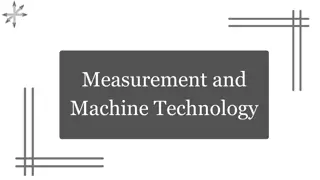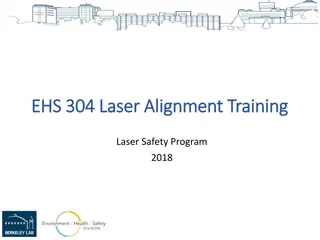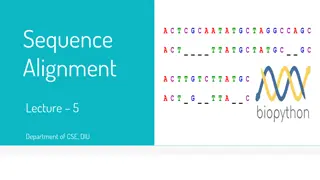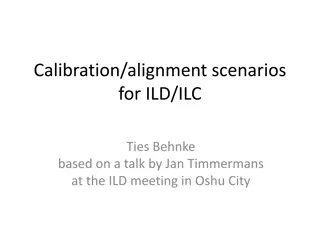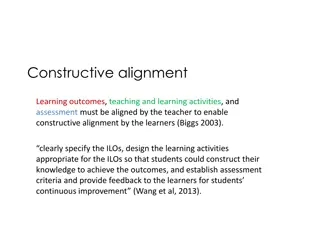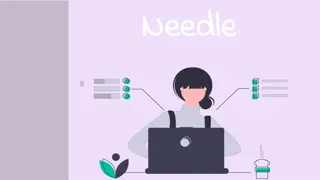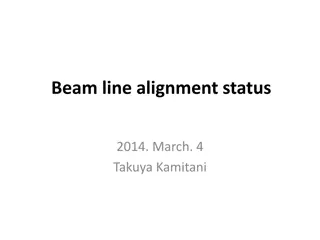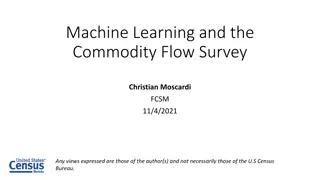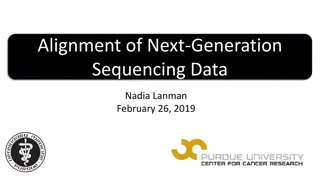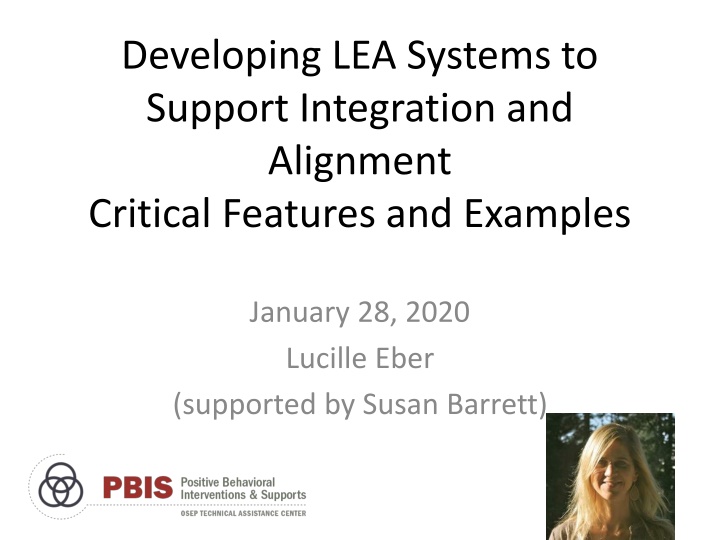
Alignment and Integration in Educational Systems
Explore the significance of alignment and integration in educational systems, including examples of critical features and the conscious effort needed for effective implementation. Learn about the challenges, opportunities, and key strategies for successful integration within educational organizations.
Download Presentation

Please find below an Image/Link to download the presentation.
The content on the website is provided AS IS for your information and personal use only. It may not be sold, licensed, or shared on other websites without obtaining consent from the author. If you encounter any issues during the download, it is possible that the publisher has removed the file from their server.
You are allowed to download the files provided on this website for personal or commercial use, subject to the condition that they are used lawfully. All files are the property of their respective owners.
The content on the website is provided AS IS for your information and personal use only. It may not be sold, licensed, or shared on other websites without obtaining consent from the author.
E N D
Presentation Transcript
Developing LEA Systems to Support Integration and Alignment Critical Features and Examples January 28, 2020 Lucille Eber (supported by Susan Barrett)
Alignment: Defined Goodman and Horner (2015) Alignment: To be in precise adjustment or correct relative position The proper positioning of parts in relation to each other. Organizational Alignment The simultaneous implementation of multiple initiatives with efficiency and effectiveness. 2
Can You Help Make it Happen? When and How is Alignment Happening? Is there a conscious effort or defined process*? What is the level within the organization ? State, District, School Student Services, Special Education, Equity, School Improvement Community Partners? *Technical Guide for Alignment of Initiatives, Programs and Practices in School Districts (OSEP Technical Assistance Center on PBIS, 2017) https://www.pbis.org/resource/technical-guide-for-alignment-of-initiatives-programs- and-practices-in-school-districts
Celebration Critical Mass Reached Social Emotional Behavioral Academic merging together under the umbrella of MTSS Implementation Science Attention to/Need For Mental Health, Wellness, Whole Child
Opportunity Researcher, practitioners, leaders see the value and are using the framework logic to guide efforts Restorative Practices Trauma Informed Literacy Math Mental Health Social Emotional Learning
Worry Popularity breeds fragmentation ? Potential for drift? Potential for confusion? Systems change is complex Multiple Definitions Multiple Interpretations Range of experiences especially in low fidelity settings
Tip #1: When Navigating Integration Stick to the Core Features 1) Effective leadership teams that include school and community mental health providers 2) Data-based decision making 3) Formal processes for the selection & implementation of evidence-based practices (EBP) across tiers with team decision-making. 4) Early access through use of comprehensive screening 5) Rigorous progress-monitoring for both fidelity & effectiveness of all interventions 6) Ongoing coaching at both the systems & practices level for all professionals-
Worry From initiative overload to framework overload Exhausted workforce Frameworks working in a system of silos will continue to have a splintering effect and yield modest impact at best.
Applying MTSS or Framework Logic Independently is NOT Integration Restorative Practices, Trauma Informed, Literacy, Math, Mental Health, Social Emotional Learning, Bully Prevention, Safety, Climate To what extent do each have their own team, data system, fidelity tool, training event/conference, budget line and staffing? We are MTSS savvy but still working in silos. How do we align all related initiatives through one system at the district and school level?
Tip #2: Invest in a Single System of Delivery Multi-disciplinary leadership teams Authority to navigate budgets, policy, oversight School improvement, equity, leadership, families, students, community, student services, special education, curriculum and instruction, HR, IT, LMNOP Invest in ONE school improvement framework Ensure ALL Social-Emotional-Behavioral initiatives are aligned through use of core features (one set of teams, use of data )
Technical Guide for Alignment of Initiatives, Programs and Practices in School Districts (OSEP Technical Assistance Center on PBIS, 2017) https://www.pbis.org/resource/technical-guide-for-alignment-of-initiatives- programs-and-practices-in-school-districts Cabinet Level: implementation science experience and provides authority to leadership for alignment Coordinate and lead alignment process with an executive level team Implementers: Leadership Team: Charged with alignment installing process for alignment people with knowledge of the initiatives direct experience with implementation of core features and practices
Role and Function of Team Clear and Consistent Leadership Executive Functions: Provide the authority and problem solving needed to overcome organizational barriers and implement the efficiencies needed to functionally interconnect educational, behavioral and mental health supports. This typically requires the difficult process of abandoning long held patterns of doing business and creating new models based on the strengths of the schools/district/community, and the changing needs of students and families.
Clear and Consistent Leadership Executive Functions: Provide the funding, visibility, and political support needed to allow school teams to travel through the full sequence of adoption stages. Adopting an integrated framework is process that will challenge the assumptions and traditional practices of most school faculty, and mental health systems. Implementation functions: Provide the training, coaching and feedback systems needed to establish personnel with both the specific technical skills needed to deliver integration and the organizational vision to deliver those skills within a unified framework.
Tip #3: Start with a Slice of the System Co-Sponsored PD Events Co-Branded resources Policy Funding State Single Set of Teams School Improvement, Equity Special Ed, Gen Ed, Community, School Student, Family Regional or District Team County District Leadership Team School Social Emotional Behavior Competencies are embedded in academic content Classroom Teaching Rules, Routines alongside calming strategy
Tip # 4: Use the items in Districts Systems Fidelity Inventory (DSFI) to Examine Integration and Alignment Funding & Policy How will we respond when new money and opportunities are available in our districts will we use the guiding principles to shape integrated logic? What role does policy have in shaping integration and alignment? DSFI 3.5: Initiative Adoption Procedures: Clear procedures are available and regularly followed for reviewing, prior to adoption, program indicators (i.e., evidence, usability and supports) and implementation site indicators (i.e., capacity, fit, & need)to promote adequate alignment and integration of potentially new initiatives with existing social-emotional-behavioral initiatives.
Advancing Education Effectiveness: Interconnecting School Mental Health (ISF) and School-Wide Positive Behavior Support (PBIS) Editors: Susan Barrett, Lucille Eber and Mark Weist pbis.org csmh.umaryland IDEA Partnership NASDSE
The Interconnected Systems Framework (ISF) Deliberate application of the multi-tiered PBIS Framework for all social-emotional-behavioral (SEB)interventions, (e.g. Mental Health, Social Emotional Instruction, Trauma-Informed Practices, Bully Prevention, etc.), Aligning all SEB related initiatives through one system at the state/regional, district and school level. Active participation of Family and Youth is a central feature of the ISF. DSFI 3.2 Community Agency Alignment: Procedures exist to ensure that all external community agency work is aligned to PBIS framework, evidence- based practices, and organizational goals of the district.
ISF Volume 2: An Implementation Guide Chapter 1: Context and Structure for Volume Chapter 2: Defining ISF: Origins, Critical Features, and Key Messages Chapter 3: Exploration and Adoption Chapter 4*: Installing ISF at the District/Community Level Chapter 5*: Installing ISF at the School Level Chapter 6: Full Implementation and Sustainability * Includes Installation Guide
Alignment of PBIS & Mental Health Moving from a co-located school mental health model to an integrated model where all S/E/B interventions are designed, delivered, and monitored through one set of teams at each school. Community and school-based clinicians actively participate with other school staff in multi-tiered teams, reviewing data and ensuring effective system structures at the school level. DSFI 3.4 Alignment to Initiatives: Clear description of initiative alignment (e.g., graphic organizer, organizational chart, conceptual map) displays integrated and/or collaborative implementation of PBIS with existing initiatives having similar goals, outcomes, systems, and practices.
ISF Applies MTSS Features to all SEB Interventions 1) Effective teams that include community mental health providers 2) Data-based decision making that include school data beyond ODRs and community data 3) Formal processes for the selection & implementation of evidence-based practices (EBP) across tiers with team decision making 4) Early access through use of comprehensive screening, which includes internalizing and externalizing needs 5) Rigorous progress-monitoring for both fidelity & effectiveness of all interventions regardless of who delivers 6) Ongoing coaching at both the systems & practices level for both school and community employed professionals
INCORPORATE Coping Strategies for Managing Stress Teaching Matrix Library/ Comput er Lab All Lunch Halls Playgrounds Assembly Bus Settings Be on task. Give your best effort. Be prepared. Study, read, compute. Invite those sitting alone to join in Sit in one spot. Watch for your stop. Respectful Walk. Have a plan. Have a lunch plan and choose quiet or social lunch area Share equipment. Include others. Expectations Use normal voice volume. Walk to right. Be kind. Hands/feet to self. Help/share with others. Listen/watc h. Use appropriate applause. Use a quiet voice. Stay in your seat. Achieving & Organized Whisper. Return books. Invite friends to join me Use my breathing technique Pick up litter. Maintain physical space. Push in chairs. Treat books carefully. Use equipment properly. Put litter in garbage can. Recycle. Clean up after self. Pick up. Treat chairs carefully. Wipe your feet. Responsible Listen to my signals
Trauma-Informed Tier 2 Group Daily Progress Report (DPR) Sample NAME:______________________ DATE:_________________ 1 st block 2nd block 3 rd block 4 th block EXPECTATIONS 2 1 0 2 1 0 2 1 0 2 1 0 Be Safe Self-Check Use calming strategy 2 1 0 2 1 0 2 1 0 2 1 0 Be Respectful Use your words Use safe hands 2 1 0 2 1 0 2 1 0 2 1 0 Be Responsible Ask for help Connect with safe person Total Points Teacher Initials
Exploration (District Level) Steps: Establish an exploration team Coaching Questions: Do you have an existing district leadership team? Examine current partnerships Do you have family or community partners on your team? Assess impact of existing initiatives/programs What existing agreements do you have with community partners? Develop a shared understanding of ISF What is current status of MTSS structures/implementation? Determine benefit Decide to adopt or not
Adoption Decisions (District Level) Establish commitment to: Establish executive level leadership team. Develop and revise contractual agreements/memorandums of understanding. Consider needed changes to policy, funding, professional development, coaching and data systems. Develop 3-5 year action plan focused on large system change efforts: Installation in and support of pilot/demo sites
How DCLT*s set-up for Installation at School Level Review MOU and redefine expectations of clinician functioning for team-based MTSS features Address funding issues to allow the new functioning Review existing programs and interventions and target some for change (possibly elimination?) Staff utilization review Develop co-coaching system and feedback loop from pilot schools to district/community leadership? *District/Community Leadership Team (DCLT)
What is your local context? What Deliberate Conversations Need to Happen in your LEA? Status of PBIS/MH and related SEB initiatives? Fidelity? Outcomes? Leadership Structures? District leadership teams (vs implementation teams) for PBIS/SMH? Established district/community leadership team? Existing partnerships? MOUs? Co-located systems?
Table Discussion Table Discussion (25 minutes) a. Discuss your current priorities for integration and alignment based on (a) specified grant activities and (b) identified needs w/in your LEA. b. Review 3. Funding and 4. Policy items related to alignment on the DSFI and note key actions on your action plan. c. Discuss available resources with other teams and TA providers at your table. d. Identify and document 1-2 important activities on your action plan. Table Report Outs (5 minutes)

